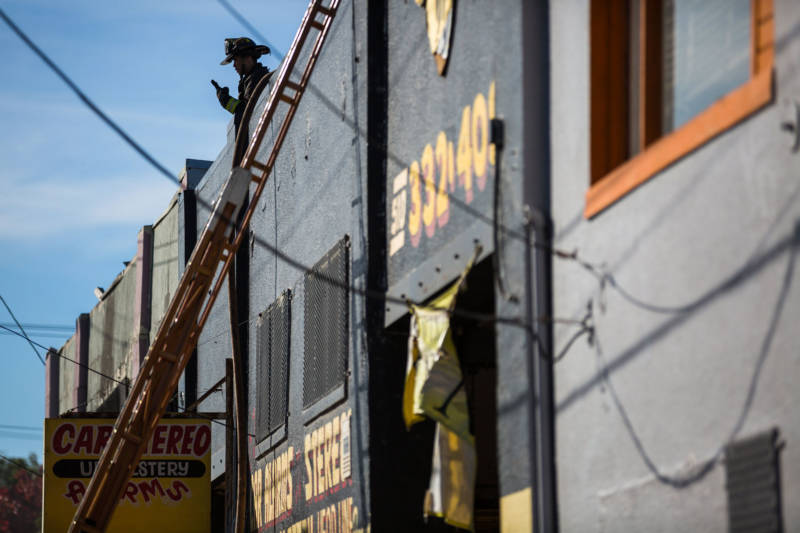A character witness for the defense in the Ghost Ship trial testified Thursday that Max Harris, who has been described as creative director of the Oakland warehouse that caught fire in 2016 and killed 36 people, was honest and dependable.
Ghost Ship Trial: Witness Calls Defendant Max Harris Truthful, Dependable

"Max was always one you could count on to tell the truth, even if it was self-inflicting," said artist Mike Funkhouser, who lived at the Ghost Ship for about one year in 2015 and 2016. "In a constantly changing community, Max was a pillar. You could depend on him."
He called Harris an active working artist like the rest of the people living there and described him as a "helpful resource in the warehouse," bringing tools and other equipment to other artists when they needed them.
Harris' defense attorneys had called three other character witnesses to testify on Monday and Wednesday.
Alameda County Deputy District Attorney Autrey James asked Funkhouser during cross-examination if he would change his opinion about Harris if he saw video of Harris telling law enforcement that no one lived in the Ghost Ship. Funkhouser responded, "For me personally, I don't think he would go around spouting lies about one event, stretching the truth."
Harris and master tenant Derick Almena both face 36 counts of involuntary manslaughter for the Dec. 2, 2016, blaze on the night of an electronic music party. Prosecutors argue the defendants converted the warehouse into an illegal, unsafe living space stuffed from floor to ceiling with flammable materials. They argue that proper safety measures weren't installed, like well-lit exits, signs and sprinklers.
The defense has argued that the blaze was caused by an act of arson.
Funkhouser, who said he paid $500 a month in rent, said he "loved" the warehouse and described it as being "full of beautiful art" and "an amazing, creative environment."
Funkhouser also described those living in the Ghost Ship as trying to "be proactive about the elements of danger" and that "it was something on our minds at all time[s]," in response to questions about safety from Tyler Smith, who represents Harris. Funkhouser said there was an "ongoing project" to bring back fire extinguishers to the warehouse, but said it was a communal effort.
Prosecutor James asked Funkhouser if he saw fire sprinklers in the warehouse. Funkhouser responded that he saw pipes but didn't know if they were sprinklers. Funkhouser also said that at least three of the five to seven people who lived there while he was there had smoke alarms in their living areas.
Russell Butler, a musician and visual artist, also testified Thursday that he was going to perform the night of the blaze. He described arriving at the warehouse at approximately 9 p.m. and then setting up his equipment. He said he then stepped out in front of the warehouse to get some fresh air before the show. He said he then saw thick smoke billowing, and for about four to five minutes people ran out of the building. He said that after about five minutes, no one else came out.
Butler testified he lost 17 friends the night of the fire.
Butler said he also previously hosted an electronic music event at Ghost Ship on Jan. 30, 2016, paying $1,000 to rent space for the 200 to 300 people he said attended. He said he had coordinated with Harris for the Jan. 30 occasion, but said Harris had no role in coordinating the Dec. 2, 2016, music event.
Harris is expected to take the stand Monday. Alameda County Judge Trina Thompson said an overflow room will be set up to accommodate victims' families and others interested in the trial.
